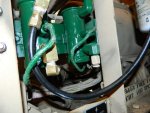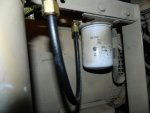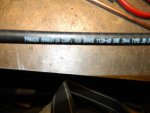rustystud
Well-known member
- 9,298
- 3,074
- 113
- Location
- Woodinville, Washington
A lot of people have problems with fuel line replacement as the stock fittings are an odd duck 5 AN (37 degree JIC ). This is what I have done to my MEP-003a. This is also what we use on our busses. There "DOT" brake line hose with compression fittings. I changed out all the lines after I cleaned up my fuel pumps. Also removed one pump and am keeping it for a backup.






 The only problem is you have to make up a fuel tank suction pipe. I took one of the 90 degree fittings and drilled out the bottom to 5/16", then using a 14" long piece of 1/4" copper tubing I soldered it in place. Works great !
The only problem is you have to make up a fuel tank suction pipe. I took one of the 90 degree fittings and drilled out the bottom to 5/16", then using a 14" long piece of 1/4" copper tubing I soldered it in place. Works great !
I should mention that the hose is only $1.00 per ft. If you have to replace a line all you will have to buy is a new ferrule and the hose.







 The only problem is you have to make up a fuel tank suction pipe. I took one of the 90 degree fittings and drilled out the bottom to 5/16", then using a 14" long piece of 1/4" copper tubing I soldered it in place. Works great !
The only problem is you have to make up a fuel tank suction pipe. I took one of the 90 degree fittings and drilled out the bottom to 5/16", then using a 14" long piece of 1/4" copper tubing I soldered it in place. Works great ! I should mention that the hose is only $1.00 per ft. If you have to replace a line all you will have to buy is a new ferrule and the hose.
Last edited:




